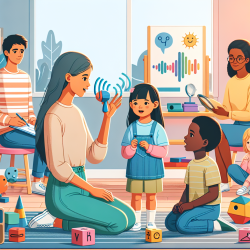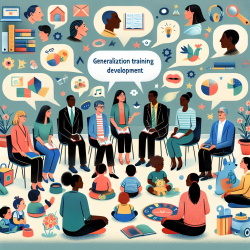Stuttering or dysfluency in children is a complex communication disorder that poses significant challenges for both practitioners and families involved. Drawing insights from the research article, "Working with Dysfluent Children: Practical Approaches to Assessment & Therapy," this blog aims to equip practitioners with strategies to improve their therapeutic approaches and encourage further exploration into stuttering interventions.
Understanding the multifaceted nature of stuttering is crucial. Stuttering is not merely a speech irregularity; it involves psychological, emotional, and social dimensions that impact a child's well-being. The research emphasizes the importance of a holistic approach to therapy, one that considers the child's broader communicative environment and personal experiences.
Here are several strategies derived from the research that can enhance a practitioner's effectiveness in working with dysfluent children:
- Adopt a Family-Centered Approach: Engage families in the therapeutic process. Educate parents and caregivers on how they can support their child's communication in a pressure-free environment. Collaboration with families ensures that therapy extends beyond the clinical setting into the child's daily life.
- Focus on the Child's Strengths: Build therapy around the child's interests and strengths. Activities that the child enjoys and excels in can boost confidence and reduce the anxiety associated with speaking.
- Encourage Positive Communication Environments: Work with caregivers and educators to create supportive communication environments. Reducing pressure to speak perfectly and acknowledging efforts rather than fluency can alleviate stress on the child.
- Incorporate Technology: Utilize technological aids and applications designed to support speech fluency. These tools can provide additional practice and feedback in a fun and engaging way.
- Implement Group Therapy: Group sessions with peers facing similar challenges can decrease feelings of isolation and increase motivation. It also provides opportunities for practicing communication skills in a supportive setting.
Moreover, the research highlights the significance of addressing the emotional and psychological aspects of stuttering. Therapy should not only aim to improve fluency but also to help the child develop resilience and positive self-perception. Practitioners are encouraged to explore interventions that address these aspects, such as cognitive-behavioral therapy techniques tailored for children.
Continuous professional development is essential. The field of speech and language therapy is ever-evolving, with new research shedding light on more effective interventions for stuttering. Practitioners should remain curious and open to learning, whether through further research, attending conferences, or participating in webinars and workshops focused on stuttering.
In conclusion, working with dysfluent children requires a comprehensive, empathetic, and flexible approach. By implementing the strategies outlined above and committing to ongoing learning, practitioners can make a significant difference in the lives of children with stuttering and their families. The journey to improving fluency and communication confidence is a collaborative one, involving the child, their family, and a dedicated practitioner.
For those interested in delving deeper into the research and expanding their understanding of practical approaches to working with dysfluent children, reading the original research article can provide valuable insights and guidance. To read the original research paper, please follow this link: Working with Dysfluent Children: Practical Approaches to Assessment & Therapy.










